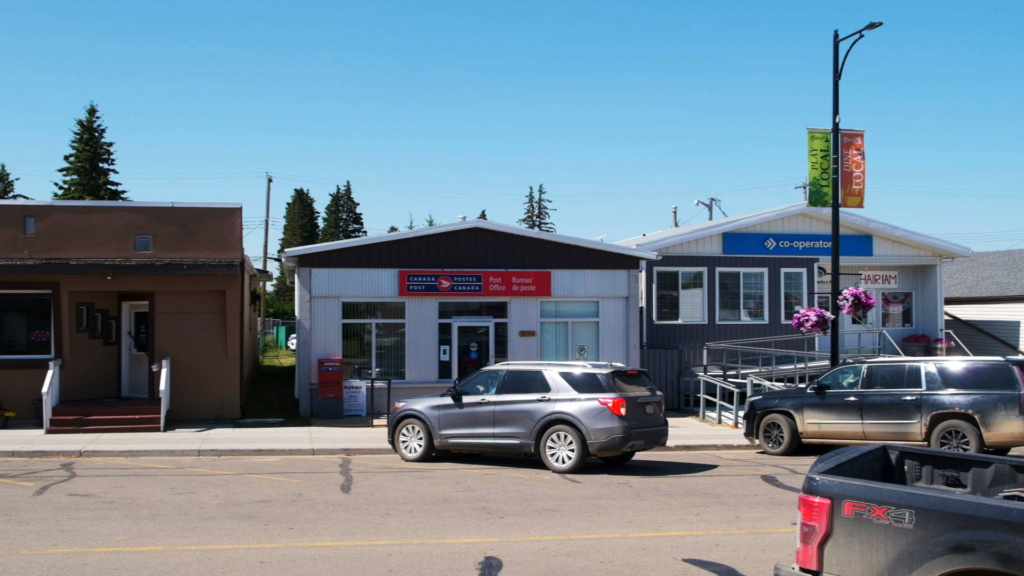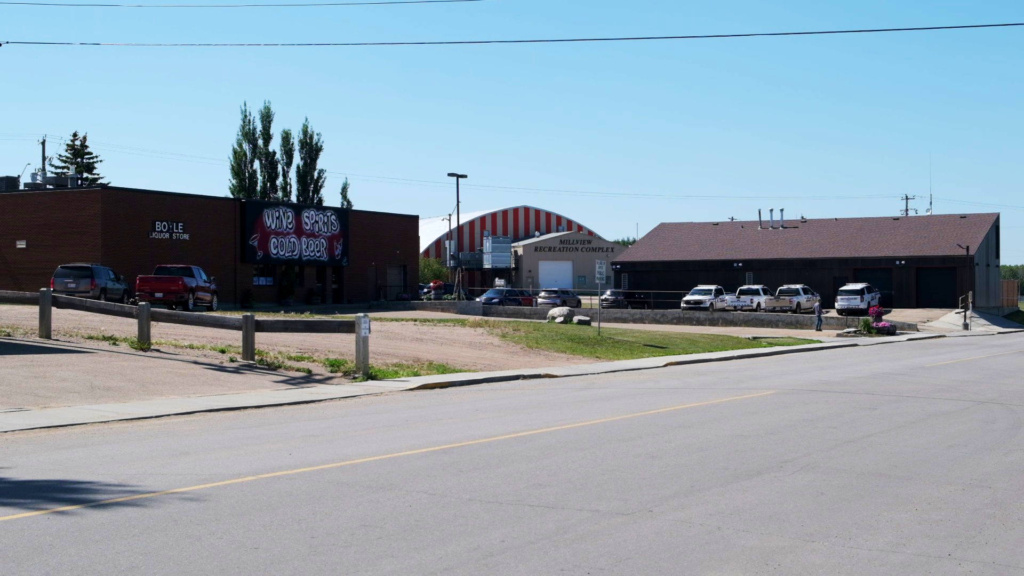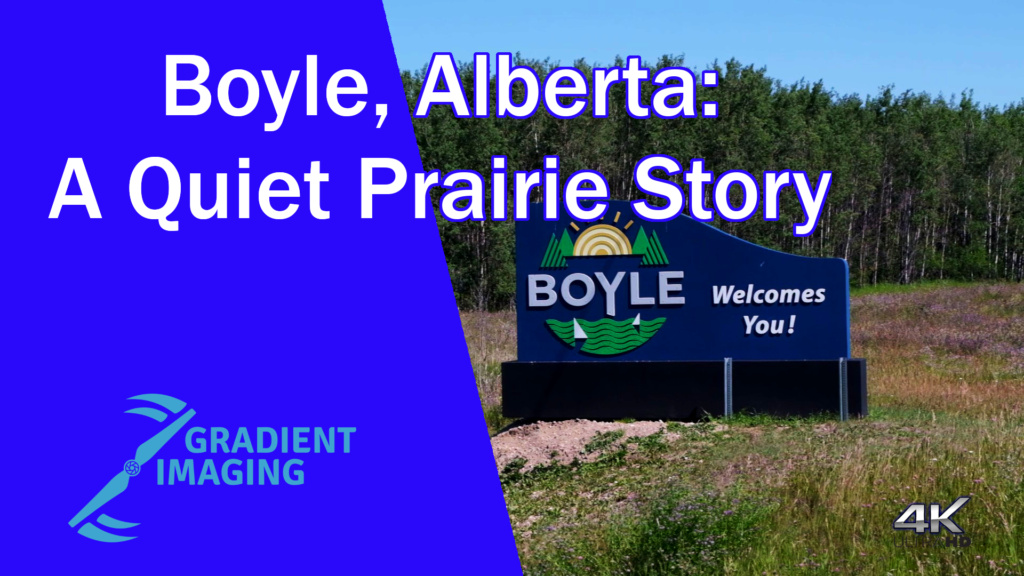You don’t end up in Boyle by accident. It sits quietly in northern Alberta’s lake country, about halfway between Edmonton and Fort McMurray. There’s no skyline here, no big attractions—but there’s movement. When we passed through around noon, Main Street was surprisingly busy. Trucks pulled in and out, people walked between shops, and conversations spilled out onto the sidewalk. It felt lived-in, not just functional.

Boyle became official in 1916, named after Justice John R. Boyle. Like many prairie towns, it developed around the railway, which was built by settlers who cleared land, raised livestock, and made the most of their resources. The rail line brought supplies and connection, and the town slowly took shape. A school, a few businesses, and a sense of local rhythm emerged. It wasn’t a boomtown, but it held.
One of the places that still anchors the community is the Millview Recreation Complex. It’s Boyle’s arena, and it recently got a new rink liner. Hockey games are now live-streamed, which speaks volumes about how the town balances tradition with subtle yet meaningful upgrades. The building’s been around for decades, but it’s clearly looked after. In towns like Boyle, arenas aren’t just for sport—they’re for gathering, cheering, and keeping people connected.

Then there’s the noon siren. It went off while we were in town—sharp and sudden, but not alarming. Locals didn’t flinch. It’s just a test, maybe only on Tuesdays, but it’s one of those small-town signals that reminds you the place is still ticking.
Boyle doesn’t try to reinvent itself. A few new ideas have come and gone, but the town tends to stick with what works. That’s not resistance—it’s clarity. People here know what they value, and they keep showing up for it.
Driving out, the welcome sign is a little worn from years of wind and snow, but it still stands. Boyle isn’t trying to be anything other than what it is—a town shaped by rail, held together by community, and steady in its own quiet way.

